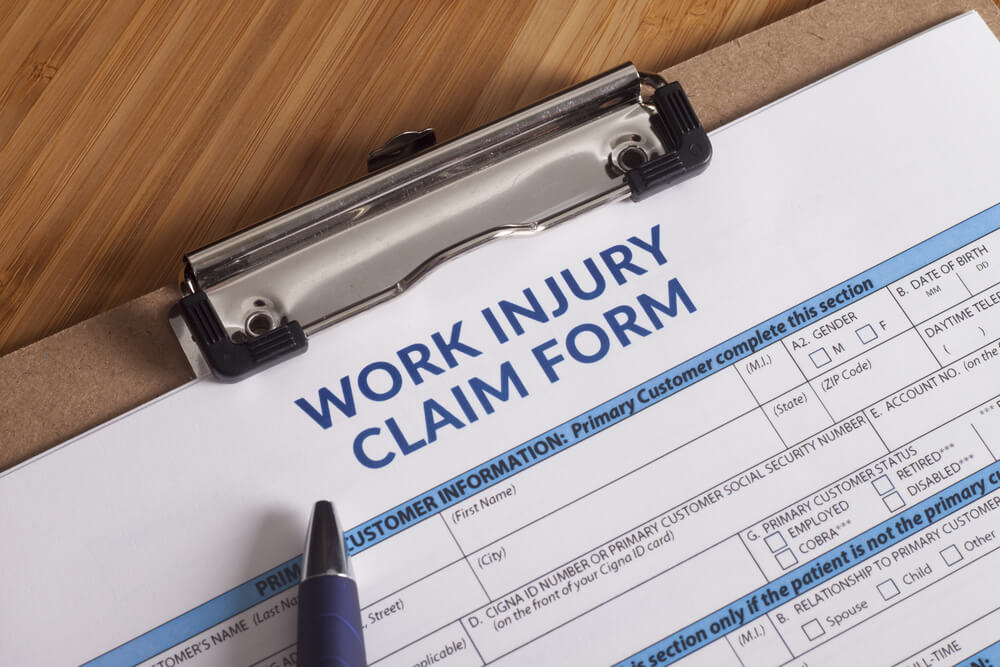- Home /
- The EaseBlog /
- PEO
The EaseBlog: PEO

10 Surefire Ways to Reduce Workers Comp Expenses
Skyrocketing workers' compensation costs can leave any employer feeling knocked flat. Yet many companies simply accept premium hikes as inevitable instead of taking action to turn the tide.
Don't become another statistic resigned to needless workers' comp expenditures. Strategic moves exist to get your business back on its feet and maximize every dollar spent protecting your most vital asset - your workforce.
Comprehensive hazard identification, ongoing safety training, and injury prevention measures form the cornerstone of an effective risk management program. Get employees engaged in helping shape safety policies and speaking up when they notice hazards. Make it clear that accident avoidance is everyone's shared responsibility, not just management's.
When it comes to lowering workers' comp costs, an ounce of prevention is truly worth a pound of cure.
1. Implement Effective Safety Programs and Training
Don't wait for injuries to occur to take action - implement safety initiatives that aim to prevent workplace accidents before they happen.
An excellent safety program goes beyond basic compliance and checklist activities. It fosters a culture of safety where employees are genuinely invested in preventing accidents, not just going through the motions.
Strong management commitment and leadership are critical. Safety must be a clear priority set from the top down. That means providing adequate resources and funding for safety initiatives is vital.
Regular hazard assessments should occur, involving frontline employees closest to the risks. Their insights are invaluable for identifying issues. Thorough incident investigations can help prevent recurrences.
Ongoing safety training uses varied formats like classroom instruction, on-the-job coaching, and refresher videos to maintain employee engagement.
At the same time, workplace design, equipment maintenance, and operating procedures should be proactively tailored to control hazards, not just meet minimum standards.
By making safety a lived value, not just a policy, companies can transform their risk profile and create a self-sustaining safety culture. Employees will embrace safety when they see commitment throughout the organization.
2. Get Injured Employees Back to Work Quickly
Even the most robust safety program can't prevent all workplace accidents. When injuries do happen, taking steps to get your staff back on their feet quickly is critical to controlling workers' comp costs.
Implementing an effective return-to-work program shows employees you're invested in their recovery while reducing lengthy claims. Work closely with doctors to determine if light, transitional, or modified duties are feasible as your employees recuperate. This type of modified work arrangement can ease an injured employee's transition back to full productivity.
A little flexibility in duties and schedules can pay big dividends by shortening lost time and motivating your team. Proactively manage each open claim to resolution through constant communication with care providers, claims adjusters, and injured staff. Your hands-on involvement and diligent claims management guidance will help avoid unnecessarily prolonged treatments or absences.
Periodically check in with recovering staff to address any work-related barriers slowing their progress. Encourage them to speak up if specific tasks prove too challenging so that further workplace modifications can be made. Your empathy and willingness to adapt will show injured employees their value while demonstrating shrewd claims management.
Getting injured workers back to full duty promptly is challenging but fulfilling work. The payoff is reduced disability costs and shorter claim duration.
3. Pay Close Attention to Payroll Audits
While proactive safety and return-to-work programs aim to control workers' comp costs on the front end, managing the back-end details is also critical. One area often overlooked is auditing the data used to calculate your premiums.
Pay close attention during annual payroll audits and policy renewals. Ensure employee classifications and workers' compensation figures reported match your actual workforce makeup. Review mod factors and rates applied for accuracy based on your risk profile. Identify any qualifying discounts or credits to receive.
You should also scrutinize the experience modification factor applied to your policy to confirm it aligns with your recent loss history. Verify that the worker classifications will result in the most favorable premium rate. Correct any payroll audit discrepancies promptly to avoid compounding errors.
Don't leave easy savings on the table when renewing coverage.
4. Consider Higher Deductibles or Self-Insurance
Up to this point, we've focused on reducing workers' comp costs within the constraints of your existing insurance policy. But what if we told you that you could take even greater control of your program finances?
Consider whether shifting to higher deductibles, self-insurance, or joining a captive program may offer advantages. While these options assume more risk, they provide financial incentives and let you manage claims dollars spent more directly.
With a high deductible program, you pay less in premiums but take on more responsibility for covering each claim up to the deductible amount. Though initial payouts increase, you save over time by controlling payouts under the deductible level.
Self-insuring also reduces premiums but means you take full responsibility for funding claims. This requires stringent loss control and reserves but aligns incentives for safety and prompt return to work.
Joining an industry captive spreads risk across companies while offering potential dividend payments for good loss performance. Evaluate options thoroughly to find the best fit.
Evaluating your risk appetite and cost reduction goals with informed advisors is vital. Don't jump unquestioningly into alternatives without understanding the pros and cons. But also don't shy away from scenarios aligning incentives and providing greater choice.
Of course, this doesn't include the savings of keeping employees happy and healthy long before any workplace injury occurs.
5. Maintain a Workplace Wellness Program
While safety programs and return-to-work initiatives seek to manage workplace injury risks, maintaining employee health and well-being can help avoid accidents in the first place.
Consider implementing a wellness program that encourages healthy lifestyle choices through education, biometric screenings, fitness contests, and monetary incentives. Provide resources to assist employees in quitting smoking, losing weight, improving nutrition, and reducing stress.
Promote an organizational culture that prioritizes physical and mental health. Offer flexible scheduling to allow for exercise and life balance. Provide ergonomic workstations, standing desks, and proper lighting to maximize employee comfort.
A workplace fostering holistic wellness can lower the chance strains, sprains, and other injuries occur. Healthy employees with high morale are also more engaged and productive. Investing in employee health keeps your most valuable assets - your people - in top physical and mental shape.
6. Address Ergonomic Risks
Workplace design directly impacts employee health and safety. Be proactive in evaluating equipment, workspace layouts, and standard operating procedures to identify and control physical risk factors.
Provide ergonomically-optimized tools and furnishings to reduce strains and repetitive injuries. Include anti-fatigue mats, wrist rests, adjustable chairs and desks, and proper computer positioning.
Ensure equipment like machinery guards, restraint devices, and ventilation systems meet or exceed Occupational Safety and Health Administration (OSHA) safety standards. Address noise hazards and chemical exposures through engineering controls or personal protective equipment (PPE).
Refine procedures in consultation with employees to integrate stretching and micro-breaks that allow bodies to recover.
Promoting strong ergonomic practices demonstrates your commitment to employees' well-being. A focus on safety-oriented design protects your team while controlling workers' comp costs.
7. Avoid Excessive Overtime
While meeting production goals is essential, don't let pursuing them come at the expense of your team's safety and well-being. Excessive overtime and understaffing often go hand in hand, contributing to hazardous fatigue levels.
Be cautious of scheduling long shifts or consecutive extra shifts. As employee exhaustion sets in, mental lapses increase, and proper safety practices degrade, raising the risk of workplace accidents. Reevaluate workloads and capacity planning if overtime becomes systemic.
Promoting reasonable schedules demonstrates corporate responsibility and your commitment to fatigue prevention and hazard control. Make sure staff take regular time off for adequate rest and recovery. It's an investment that ultimately improves productivity, too.
8. Communicate with Injured Employees
Even when workplace accidents arise, how you handle the aftermath can impact workers' compensation costs. Maintain open communication and demonstrate empathy at every step of the recovery process.
Check-in regularly post-injury to see how employees are progressing physically and emotionally. Are they encountering any work-related obstacles or delays to securing treatment? If so, provide support navigating the claims process if frustration arises.
Ask for input as you develop return-to-work plans. Accommodate medical restrictions but also highlight the capabilities employees have. This collaborative approach gets buy-in and keeps employees motivated.
Treating staff with compassion shows their value while also reducing the chance adversarial situations arise that prolong claims.
9. Conduct Ongoing Safety Inspections
A robust safety program can identify hazards through regular assessments. But maintaining ongoing vigilance day-to-day is equally important. Encourage employees to speak up about risks they notice so actions can be taken promptly.
Conduct periodic safety inspections of equipment, storage areas, layouts, and procedures. Document identified hazards and track corrective actions through completion. Verify implemented controls are adequate.
Empower a safety committee to develop inspection checklists tailored to your worksites. Provide proper PPE for inspectors and training on how to conduct audits thoroughly.
Addressing identified risks swiftly demonstrates your dedication to safety. It also prevents minor issues from escalating into major incidents down the road. Staying vigilant keeps the prevention mindset top of mind.
10. Partner with a PEO
If your current safety program, claims management, and cost control efforts still leave an opportunity for improvement, a professional employer organization (PEO) could take your workers' compensation risk mitigation to the next level.
A PEO provides integrated human resource administration and advisory services to small and mid-sized businesses through a co-employment agreement. Essentially, a PEO becomes an extension of your in-house HR team, handling critical but often burdensome responsibilities like payroll, benefits, compliance, workers' compensation, and more.
This co-employment partnership allows the PEO to bring your employees under their umbrella for insurance and tax remittance purposes. By aggregating groups of client companies, PEOs achieve economies of scale that enable them to offer Fortune 500-style employee benefits typically out of reach for growing businesses.
PEOs can also develop customized safety initiatives tailored to your unique risks. Safety experts will thoroughly evaluate worksites, identify hazards, suggest controls, and provide ongoing training. This proactive injury prevention lowers claims frequency.
For injuries that do happen, PEOs' scale enables claims teams to closely oversee treatments, settlements, and prompt case resolutions to reduce claim duration. PEOs can also set up return-to-work programs that comply with federal and state regulations.
In addition, PEOs assume responsibility for managing the entire workers' comp audit process. Our expertise ensures proper classification and accurate premium calculations, avoiding overpayment. This results in a "pay-as-you-go" model of paying premiums.
By assuming your risks, PEOs relieve you of compliance worries across multiple states. Our vigilance catches questionable claims you may miss, preventing unwarranted costs.
Reduce Workers' Comp Expenses with a PEO
Controlling workers' compensation costs requires monitoring multiple fronts - from proactive safety and wellness programs to prompt and fair claims management and auditing. Managing all these interconnected factors can be overwhelming for small and mid-sized businesses.
By leveraging our scale and singular focus on human resource administration, PEO workers’ comp plans provide the expertise and resources to optimize every aspect of your workers' comp program. We lift the burden so you can concentrate on your core operations.
Managing risk, claims, and dollars may never be easy, but they can be easier with the right support system. Employees are your most valuable asset, and protecting their physical and financial well-being should be a top priority.
Blog Categories
- PEO (21)
- Employees & Culture (13)
- Risk Management (8)
- HR Outsourcing (7)
- Human Resources (6)
- Workers' Comp (6)
- Compliance (5)
- Payroll (5)
- PAGA (4)
- Benefits (3)
- Flexible Spending Account (3)
- Podcasts (3)
- Diversity (2)
- HR technology (2)
- Training (2)
- ASO (1)
- Healthcare Savings Account (1)
- Inclusion (1)
- Legal Updates (1)
- PTO (1)
- SB 553 (1)
- Special Districts (1)
- recruiters (1)
- staffing (1)
Subscribe Here!
Let us help streamline the way you manage HR.

Subscribe for our the latest news and legal updates that will affect your business.
Newsletter Sign Up
Contact Us
Get in touch with us today.




